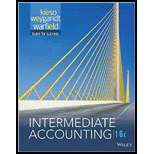
Debt securities: Debt security is a financial instrument which is issued by the organization and is sold to the investors. Bonds, commercial papers, debentures and government securities are known as debt securities.
Trading securities: Debt securities which are held with the intention to sell in the short term for profit are trading securities.
Unrealized holding gains and losses: An unrealized gain is a profit recorded on paper results from the investment. It occurs when shares prices increase after investor purchases it, but an individual has to sell it, till the time it is not sold the amount of increase in share price is recorded as an unrealized gain.
An unrealized loss is a loss recorded on paper results from the investment. It occurs when shares prices decrease after investor purchases it, but an individual has to sell it, till the time it is not sold the amount of decrease in share price is recorded as an unrealized loss.
Available-for-sale securities: A debt or equity securities which are purchased with the intention of selling it before its maturity, or selling prior to the longest time period in case if security is without its maturity are known as available-for-sale securities.
Fair value: Fair value is a selling price which is agreed by the buyer and seller, and is also the estimate of the potential market price of good, service or asset.
GAAP: GAAP is “Generally Accepted Accounting Principles.” It is standard guidelines which are commonly used for financial reporting. These guidelines are maintained by the AICPA (American Institute of Certified Public Accountants).
Derivatives: Derivative is a product whose value is derived from underlying assets called base. Basically it is a contract between the two or more parties based on assets.
Interest rate swap contract: It is an agreement between the two parties who are in contract, where one party chooses to pay a variable rate or a fixed rate agreed in advance for a predetermined period of time. Vice-verse same is applicable for the other party in the contract.
Hedge: Hedge is an investment to reduce the risk arising out of the changes in the price movements of the assets.
Fair value hedge: Fair value hedge eliminates the risk of changes in fair value of assets or a liability already recognized or an unrecognized firm’s commitment which could affect the gain or loss.
(a) To determine: To determine the investments P Company reported in 2014 and the accounting for its investments in financial statements.
Given Information: All the information related to P Company is provided in the question document.
(b) To determine: To determine the valuation and fair value of P’s investments.
Given Information: All the information related to P Company is provided in the question document.
(c) To determine: To determine the use of derivative financial instruments by P Company.
Given Information: All the information related to P Company is provided in the question document.
Learn your wayIncludes step-by-step video

Chapter 17 Solutions
Intermediate Accounting
- The actual cost of direct labor per hour is $16.25 and the standard cost of direct labor per hour is $15.00. The direct labor hours allowed per finished unit is 0.60 hours. During the current period, 4,500 units of finished goods were produced using 2,900 direct labor hours. How much is the direct labor rate variance? A. $3,625 favorable B. $3,625 unfavorable C. $4,350 favorable D. $4,350 unfavorablearrow_forwardOn January 1 of the current year, Piper Company issues a 4-year, non-interest-bearing note with a face value of $8,000 and receives $4,952 in exchange. The recording of the issuance of the note includes a: a. credit to Notes Payable for $4,952. b. credit to Discount on Notes Payable for $3,048. c. debit to Discount on Notes Payable for $3,048. d. debit to Cash for $8,000.arrow_forwardPLease helparrow_forward
- What is the budgeted total cost of direct materials purchases?arrow_forwardHy expert provide answer with calculationarrow_forwardDuring September, the assembly department completed 10,500 units of a product that had a standard materials cost of 3.0 square feet per unit at $2.40 per square foot. The actual materials purchased consisted of 22,000 square feet at $2.60 per square foot, for a total cost of $57,200. The actual material used during this period was 25,500 square feet. Compute the materials price variance and materials usage variance.arrow_forward
- Bluesy Electronics recorded the following financial data: Net Sales $720,500 Average Inventory at Cost = $80,200 Gross Margin Percentage = 42% Calculate the GMROI.arrow_forwardNeed help this question solutionarrow_forwardXYZ Company has a gross profit margin of 0.30, an operating profit margin of 18%, a total asset turnover ratio of 2.0x, and cost of goods sold of $700,000. The company's tax rate is 35%, and it has no debt. Calculate XYZ Company's Return on Assets (ROA).arrow_forward

 AccountingAccountingISBN:9781337272094Author:WARREN, Carl S., Reeve, James M., Duchac, Jonathan E.Publisher:Cengage Learning,
AccountingAccountingISBN:9781337272094Author:WARREN, Carl S., Reeve, James M., Duchac, Jonathan E.Publisher:Cengage Learning, Accounting Information SystemsAccountingISBN:9781337619202Author:Hall, James A.Publisher:Cengage Learning,
Accounting Information SystemsAccountingISBN:9781337619202Author:Hall, James A.Publisher:Cengage Learning, Horngren's Cost Accounting: A Managerial Emphasis...AccountingISBN:9780134475585Author:Srikant M. Datar, Madhav V. RajanPublisher:PEARSON
Horngren's Cost Accounting: A Managerial Emphasis...AccountingISBN:9780134475585Author:Srikant M. Datar, Madhav V. RajanPublisher:PEARSON Intermediate AccountingAccountingISBN:9781259722660Author:J. David Spiceland, Mark W. Nelson, Wayne M ThomasPublisher:McGraw-Hill Education
Intermediate AccountingAccountingISBN:9781259722660Author:J. David Spiceland, Mark W. Nelson, Wayne M ThomasPublisher:McGraw-Hill Education Financial and Managerial AccountingAccountingISBN:9781259726705Author:John J Wild, Ken W. Shaw, Barbara Chiappetta Fundamental Accounting PrinciplesPublisher:McGraw-Hill Education
Financial and Managerial AccountingAccountingISBN:9781259726705Author:John J Wild, Ken W. Shaw, Barbara Chiappetta Fundamental Accounting PrinciplesPublisher:McGraw-Hill Education





